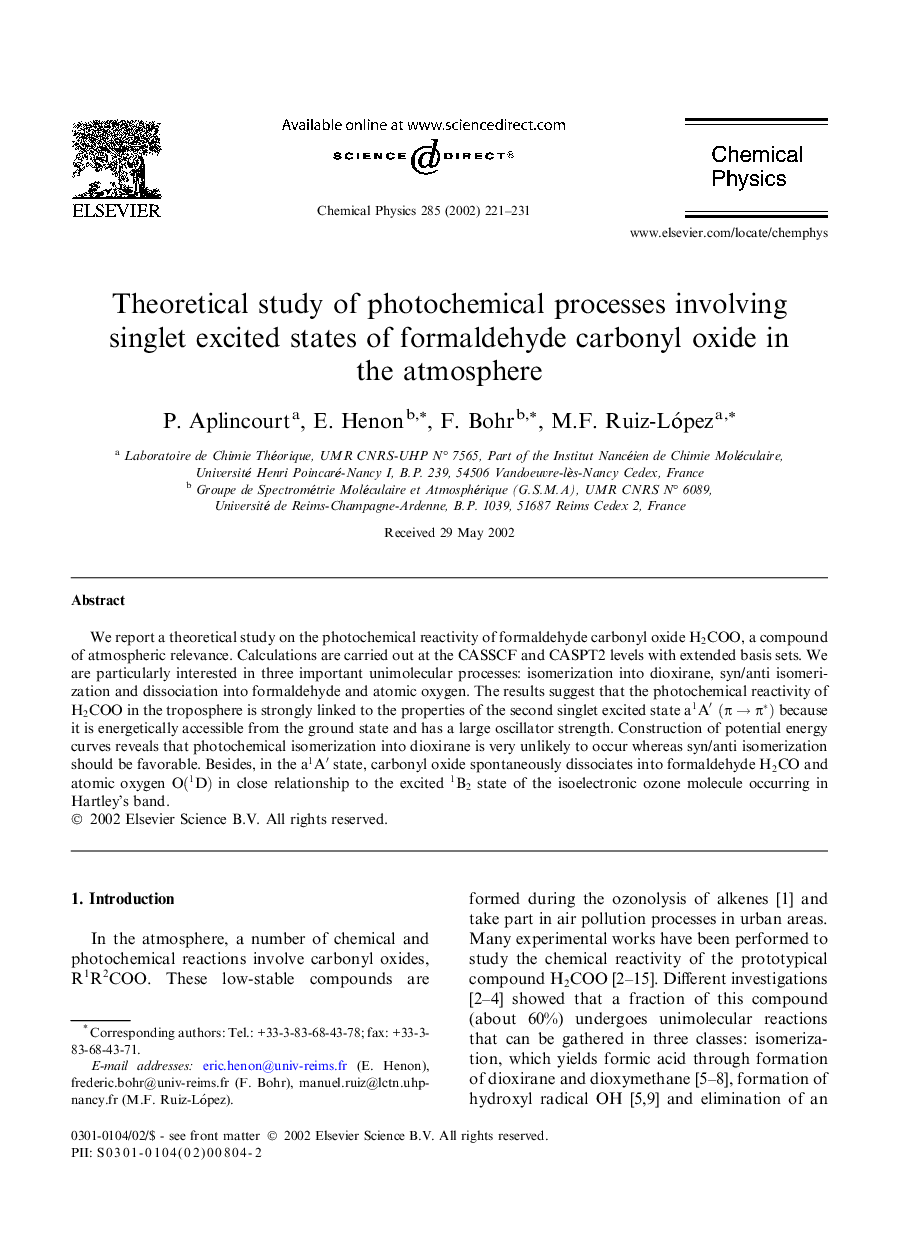| Article ID | Journal | Published Year | Pages | File Type |
|---|---|---|---|---|
| 9576410 | Chemical Physics | 2017 | 11 Pages |
Abstract
We report a theoretical study on the photochemical reactivity of formaldehyde carbonyl oxide H2COO, a compound of atmospheric relevance. Calculations are carried out at the CASSCF and CASPT2 levels with extended basis sets. We are particularly interested in three important unimolecular processes: isomerization into dioxirane, syn/anti isomerization and dissociation into formaldehyde and atomic oxygen. The results suggest that the photochemical reactivity of H2COO in the troposphere is strongly linked to the properties of the second singlet excited state a1Aâ²(ÏâÏ*) because it is energetically accessible from the ground state and has a large oscillator strength. Construction of potential energy curves reveals that photochemical isomerization into dioxirane is very unlikely to occur whereas syn/anti isomerization should be favorable. Besides, in the a1Aâ² state, carbonyl oxide spontaneously dissociates into formaldehyde H2CO and atomic oxygen O(1D) in close relationship to the excited 1B2 state of the isoelectronic ozone molecule occurring in Hartley's band.
Related Topics
Physical Sciences and Engineering
Chemistry
Physical and Theoretical Chemistry
Authors
P Aplincourt, E Henon, F Bohr, M.F Ruiz-López,
